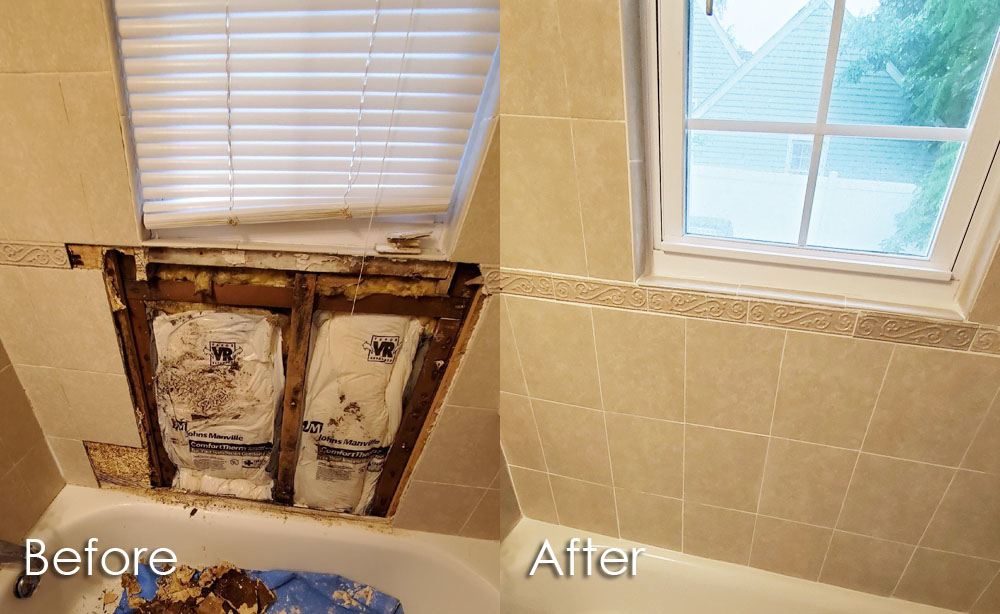How to Stop Bathroom Water Damage
How to Stop Bathroom Water Damage
Blog Article
They are making several good points about Common Causes of Water Damage in a Bathroom overall in the article which follows.

The restroom is incredibly prone for wet accumulation and potential water damage because of the frequent use of water in it. This post supplies simple examination strategies to aid detecting water damages threats.
The constant use water in the washroom makes it exceptionally prone for damp build-up as well as prospective water damage. By evaluating it regularly, you can decrease water associated damages.
The complying with set of evaluations is simple to do as well as must be done when in every three months in order to keep your restroom healthy as well as to stop prospective water damages caused by the bathtub, the shower, pipeline joints and also plumbing, sinks, cupboards, as well as the toilet
Do not neglect executing these assessments and be detailed while doing them. Bear in mind that these easy evaluations can save you a lot of cash by giving very early indicators for water damage
Sinks and Cabinets
Sinks and closets are subjected to moisture and moisture day-to-day as well as are typically overlooked. Evaluate on a regular basis under the sink and on the countertop over it. Repair any type of drip in the trap as it might suggest drainpipe issues. Look around the sink, slow-moving draining pipes may show a blocked drainpipe. Replace sink seals if they are cracked or loosened.
Bathtub and also Shower
The shower as well as bathtub need special focus and upkeep. Inspect the floor tiles as well as replace if split. Make sure that there is no missing out on cement between the ceramic tiles. Inspect and also replace cracked caulking at joints where the wall surfaces meet the flooring or the tub. Clogged drains pipes and pipelines issues will stop the bath tub from drying and also may show major troubles beneath the tub. Consult with an expert immediately to avoid architectural damage. Focus on discolorations or soft areas around the bath tub walls as they might show an internal leakage.
Plumbing
Signs for water damages are hard to find considering that the majority of pipes are set up inside the wall surfaces.
Pay special interest to floor covering and walls dampness and spots as they may indicate an invisible plumbing issue. Check wetness levels in adjoining rooms also.
The Commode
The toilet is an at risk water joint. Examine the water lines as well as search for leaks around the bathroom seat, in the hose pipe, and under the water container. If you detect any type of signs of dampness on the flooring around the commode, check for leakages in the toilet rim and container seals.
Realize that hanging toilet bowl antiperspirants boosts the chances for obstructions.
TIPS TO PREVENT WATER DAMAGE IN THE BATHROOM
The average household uses approximately 80-100 gallons of water per person per day. For a family of 4, that's almost 2,500 gallons of water a week! The largest portion of this consumption comes from bathroom use. Flushing the toilet uses the most water, followed by taking a shower or bath. With that much water running through the home, water damage in the bathroom is bound to happen. Knowing how to spot signs of a water leak is essential to preventing long-term damage. This guide provides you with tips to reduce the impact of water damage on your bathroom.
CAUSES OF BATHROOM WATER DAMAGE
Pipe breaks are the most common cause of water damage we see in our daily jobs. The age of a pipe plays a large role in a pipe break as well as corrosion. Over time, the metal begins to break down, allowing water to escape. Frozen pipe breaks are also a concern in the winter months. Toilet overflows caused by paper products or children flushing inappropriate items. Degraded caulking around the toilet or bathtub can allow water seepage, sometimes behind the fixture, into the subfloor or walls. Condensation forms when the water in a pipe is cooler than the air temperature. Beads of water form on the exterior of the pipes, sometimes so much so that the water begins to drip and pool below. Sink or shower backups created by poor drainage. HOW TO PREVENT WATER DAMAGE IN YOUR BATHROOM
Inspect your toilet supply line for worn or frayed hoses and replace them as needed. Winterize your plumbing to prevent a frozen pipe break. Use vent fans to prevent condensation that can lead to mold growth. Routinely check and replace degraded caulking around your toilet or bathtub. Increase the temperature in your toilet tank and insulate your pipes during the warm summer months to keep condensation from forming. Use child safety locks on the toilets. Flush only toilet paper. "Flushable" wet wipes are actually not good for your plumbing system. Additionally, feminine hygiene products should not be flushed. Prevent water from escaping the tub or shower. Make sure shower curtains are in good condition. Inspect shower doors and replace the seal strip if necessary. Wipe up any water that accumulates on the floor and use bath mats. Water left to sit can cause damage to the tiles and flooring. Refrain from using bath products containing heavy oils to avoid a clogged drain.

I hope you liked our excerpt about How to Repair and Prevent Bathroom Water Damage. Thank you so much for spending some time to browse our content. In case you enjoyed reading our post if you please don't forget to pass it around. I treasure reading our article about How to Repair and Prevent Bathroom Water Damage.
Call Today Report this page